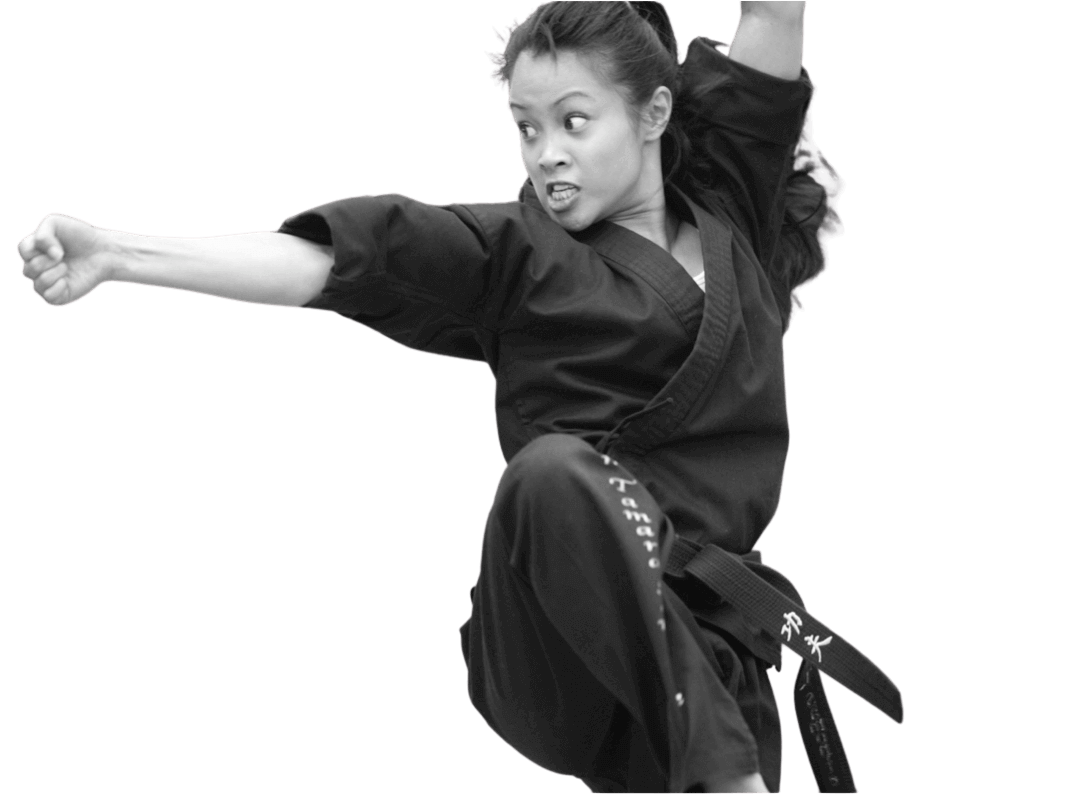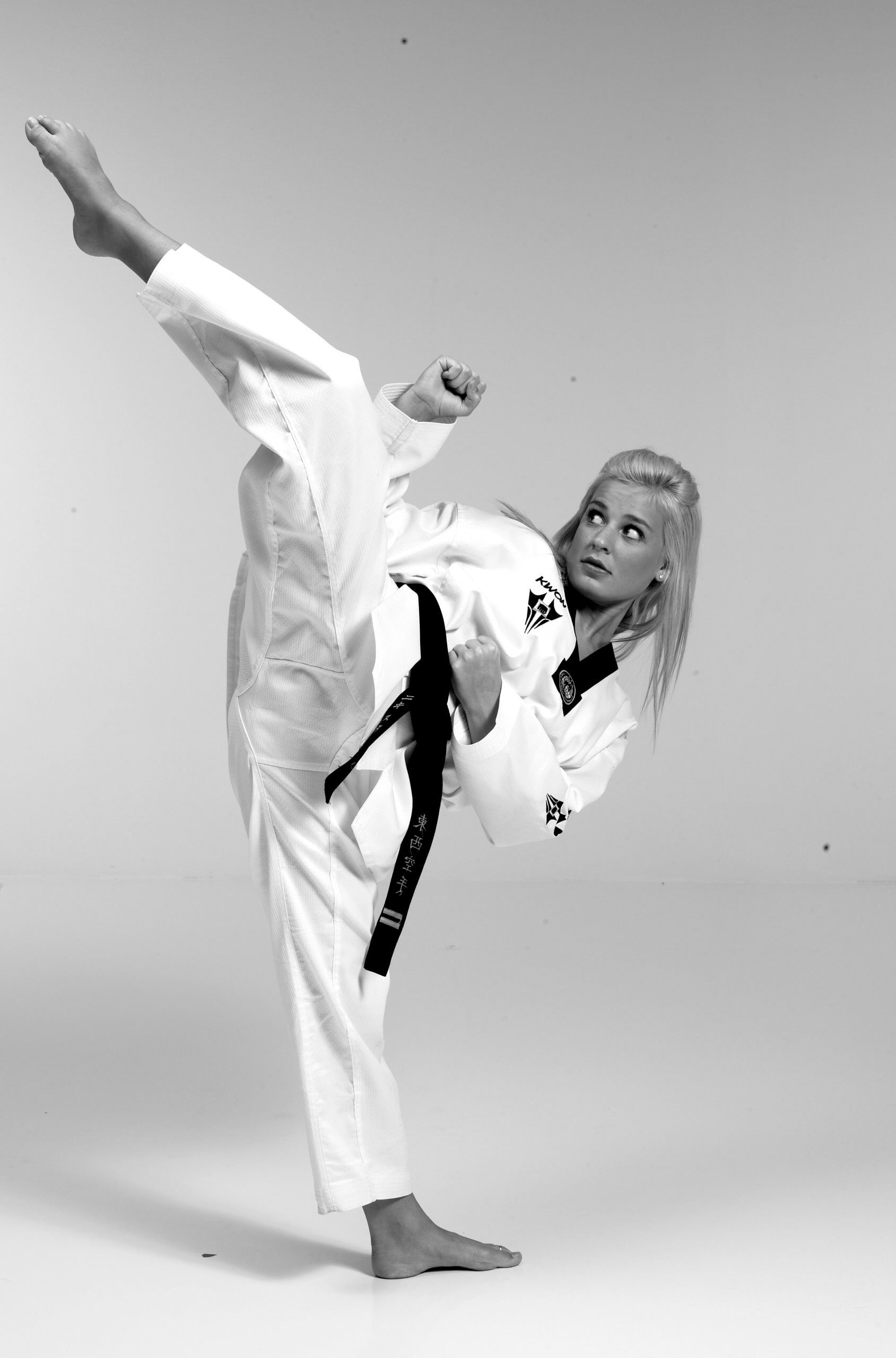Divisions & Styles

Hard Style (HS)
Hard-Style forms must use traditional moves only. A traditional form / Kata must resemble a traditional work; an adaptation will be acceptable if added moves are traditional.
A high kick can not be higher than the top of his / her self head. A freestyle form is not acceptable (no machine-gun kicking etc.). A traditional GI or Dobok must be worn, no use of weapons, no music is allowed, no time limit.Scoring, judges should be looking for: Basic techniques, Stances, Punches, and Kicks executed with balance, Blocks, Balance, Strength, and Focus.

Korean Style (KS)
Korean-Style forms must use traditional moves ITF Forms. A traditional form / Pomse / Hyong must resemble a traditional work; an adaptation will be acceptable if added moves are traditional.
A high kick can’t be higher than the top of his/her self head. A freestyle form is not acceptable (no machine-gun kicking etc…). A traditional GI or Dobok must be worn, no use of weapons, no music is allowed, no time limit.Scoring judges should be looking for: Basic techniques, Stances, Punches, and Kicks executed with balance, Blocks, Balance, Strength, and Focus.

Karate Kata (KK)
Karate Kata forms must use traditional moves only. A traditional form / Kata must resemble a traditional work; only traditional japaness Katas are allowed (JKA).
A freestyle form is not acceptable (no machine-gun kicking etc.). A traditional GI white must be worn, no use of weapons, no music is allowed, no time limit.Scoring, judges should be looking for:Basic techniques, Stances, Punches, and Kicks executed with balance, Blocks, Balance, Strength, and Focus.

Soft-Style (SS)
Gymnastic type moves are permissible, provided that they are within the style for i.e. Wu-Shu, but they must be practical. An adaptation is acceptable if added moves are traditional to soft styles.
A traditional uniform must be worn, no use of weapons, no music is allowed, 3 min time limit. A time keeper will be appointed.This is not a freestyle section, a freestyle form is not acceptable (no machine-gun kicking etc.).Scoring, Judges should be looking for: Good flowing techniques, punches, kicks, blocks, balance and stances. Strength and focus are important.

Free Style (FS)
Music must be used and the choreography to the music is of high importance. The use of weapons is strictly forbidden. The use of stage props such as Lasers, Smoke, Fire or “dry Ice” is not allowed.No dance moves or theatrical costumes are allowed.
The duration of a freestyle form must be between 1 and 3 minutes. The time starts from the first move of the form, not the announcement. A time keeper will be appointed.This is NOT a gymnastic contest and only three gymnastic moves will be permitted or a penalty of 0.5 will be deducted by each judge.Scoring, Judges should be looking for: Synchronisation to the music, showmanship, speed of the techniques, degree of difficulty, basic hand and foot technique. Balance, basic stances, strength and focus All the above are to be executed with strength and power according to the basic technique.



Musical Weapons (MW)
Music and weapons must be used and the choreography to the music is highly important.The use of stage props such as Lasers, Smoke, Fire or “dry Ice” is not allowed. No dance moves or theatrical costumes are allowed.The duration of a freestyle form must be between 1 and 3 minutes.
The time starts with the first move of the form, not the announcement. A time keeper will be appointed. All used weapons must be safe and clean and recognised within martial arts. The judges have the right to inspect weapons prior to starting a form. This is NOT a gymnastic contest and only three gymnastic moves are permitted or a penalty of 0.5 will be deducted by each judge.Scoring, Judges will mark the form on: The form will be scored on the use of the weapon, not Kicks and other techniques.Synchronisation to the music, manipulation of the weapon, speed of the techniques, degree of difficulty, showmanship, balance, basics stances, strength and focus.

Weapon no Music (WN)
Weapon traditional forms must use traditional moves only. A traditional form / Kata must resemble a traditional work; an adaptation will be acceptable if added moves are traditional. A high kick can’t be higher than the top of his/her self head. A freestyle form is not acceptable (no machine-gun kicking etc…).
A traditional GI, Dobok or Wu-Shu uniform must be worn, use of weapons is compulsory, no music is allowed.The use of stage props such as Lasers, Smoke, Fire or “dry Ice” is not permitted. No dance moves or theatrical costumes are allowed.The duration of a weapon traditional form must be between 1 and 3 minutes. The time starts with the first move of the form, not the announcement. A timekeeper will be appointed. All used weapons must be safe and clean and recognised within martial arts. The judges have the right to inspect weapons prior to starting a form.Scoring, Judges will look for: The form will be scored on the use of the weapon, not Kicks and other techniques.Manipulation of the weapon, speed of the techniques, degree of difficulty, good control, showmanship, balance, basics stances, strength and focus.

Free Style Team Forms (FT)
Music must be used and the choreography to the music is of high importance.The use of stage props such as Lasers, Smoke, Fire or “dry Ice” is not allowed.No dance moves or theatrical costumes are allowed. The duration of a freestyle form must be between 1 and 3 minutes. The time starts from the first move of the form, not the announcement.
A time keeper will be appointed.This is NOT a gymnastic contest and only three gymnastic moves will be permitted or a penalty of 0.5 will be deducted by each judge.Minimum: 2 competitor’s maximum7 per Team. Scoring, Judges should be looking for: Synchronisation to the music, showmanship, speed of the techniques, degree of difficulty, basic hand and foot technique. Balance, basic stances, strength and focus All the above are to be executed with strength and power according to the basic technique.

Karate Weapons (KW)
Karate Weapons forms must use traditional moves only. A traditional form / Kata must resemble a traditional work; only traditional japaness Katas and japaness traditionell Weapons for example an real “Oak bo” are allowed (JKA) and not a plastic Weapon.
A freestyle form is not acceptable (no machine-gun kicking etc.). A traditional GI white must be worn, no music is allowed, no time limit.Scoring, judges should be looking for:Basic techniques, Stances, Punches, and Kicks executed with balance, Blocks, Balance, Strength, and Focus.

Vetrans Traditional (VT)
Vetrans Traditionl forms must be using traditional moves based on korean, japaness or chines style only. A freestyle form is not acceptable (no machine-gun kicking etc.).
A traditional Dress (japaness, korean, chines) must be worn, no use of weapons, no music is allowed, no time limit.Scoring, judges should be looking for: Basic techniques, Stances, Punches, and Kicks executed with balance, Blocks, Balance, Strength, and Focus.

Traditional Team Forms (TT)
Traditional team forms must be using traditional moves based on korean , japaness or chines style only. A freestyle form is not acceptable (no machine-gun kicking etc.).
A traditional Dress (japaness, korean, chines) must be worn, no use of weapons, no music is allowed, no time limit.Minimum: 2 competitor’s maximum7 per Team. Scoring, judges should be looking for: Basic techniques, Stances, Punches, and Kicks executed with balance, Blocks, Balance, Strength, and Focus.

ITF Forms
ITF Forms. A struct traditional ITF form. A freestyle form is not acceptable (no machine-gun kicking etc…). A traditional GI or Dobok must be worn, no use of weapons, no music is allowed.
Scoring judges should be looking for: Basic ITF techniques, Stances, Punches, and Kicks executed with balance, Blocks, Balance, Strength, and Focus.

Mixed Material Arts (MMA)
The history of modern MMA competition can be traced to mixed style contests throughout Europe, Japan, and the Pacific Rim during the early 1900s; In Japan these contests were known as merikan, from the Japanese slang for “American fighting."
Merikan contests were fought under a variety of rules including points decision, best of three throws or knockdowns, and victory via knockout or submission.
Source: Wikipedia.
Source: Wikipedia.

Pointfighting (PF)
In Pointfighting,or Semicontact the fight gets interrupted after every successful hit and competitors move back to their starting position.In a way it is similar to the Olympic fencing. During the short interruption, the three referees involved evaluate the previous action.
Hits with the fist as well as kicks to the body score one point. Jumped kicks to the body and kicks to the head will score two points. A jumped kick to the head is the most sophisticated technique and will be rewarded with three points. The winner is the competitor with the highest total score at the end of the fight.

Karate Kumite (KK)
By Traditonal Karate Kumite the individual match in adults categories is decided by “Shobu Ippon”. “Shobu Ippon” means one point match where the participants try to score one point before their opponent within the time limit.
Ippon, literally “one full point”, is the highest score a fighter can achieve in a Japanese martial arts ippon-wazari contest. There are two possible points which participant can receive: wazari and ippon. A Waza-ari is awarded for a technique almost comparable to that needed to score Ippon. An ippon is awarded for a technique which is judged as decisive, this is usually a move which connects cleanly, with good form and with little opportunity for the opponent to defend against it.

Kyokushin Knock Down Karate
Kyokushin kaikan is a style of stand-up, full contact karate, founded in 1964 by Korean-Japanese karate master, Sosai Masutatsu Oyama.
Kyokushin is rooted in a philosophy of self-improvement, discipline and hard training.It is the hardest Karate in the World.

Kickboxing (KB)
Kickboxing is another Full Contact Ringsport.
In addition to all techniques allowed in Fullcontact it is legal to use Low kicks to the inner and outer part of the thigh.

Thaiboxing (TB)
Thaiboxing or Muay Thai is Thailands national sport. It is an ancient martial art with deep cultural traditions. During the bouts which are also fought out in a boxing ring the fighters not only use low kicks but also knees and elbows to their opponents body and head.
Before every fight the competitors perform a kind of dance, the “ram muay” or “waikru”. With this dance the fighters demonstrate their absolute will to win, honour their master, and finish their warm-up.

Light Contact (LC)
Lightcontact is a hybrid of Fullcontact and Semicontact/Pointsfighting. In contrast to the score-and-break rhythm of the semicontact bouts the sparring is continuous without interference by the referee as long as no foul play takes place and penalties need to be awarded.
In Lightcontact sparring demands a lot of technical skills and a high level of stamina. It differs from Fullcontact in the severity of the blows allowed. All attacks are to be executed with maximum control. Hard punches and kicks which could lead to knockout are not allowed.

Fullcontact (FC)
Fullcontact allows all classical boxing techniques and any kick executed to the scoring area above the waist of ones opponent. The matches take place in a traditional boxing ring.
All attacks con be delivered with full power (hence Fullcontact). Knock Outs (K.O.) and technical K.O.’s will result in the loss of the fight if achieved with legal techniques by ones opponent.